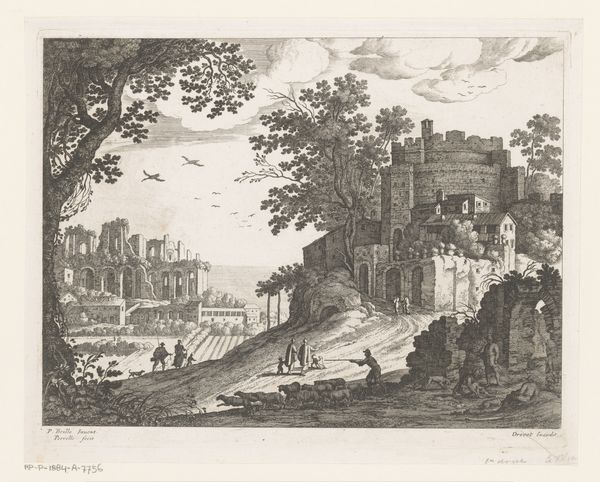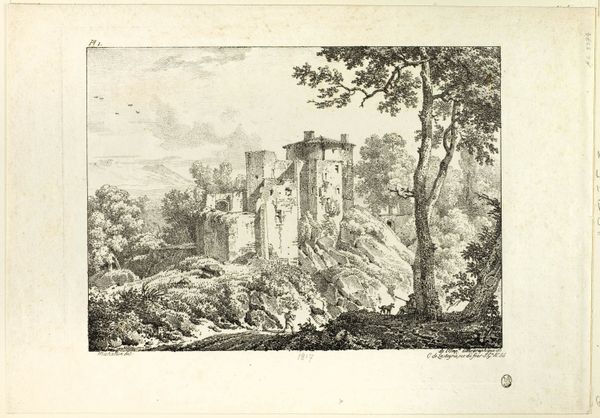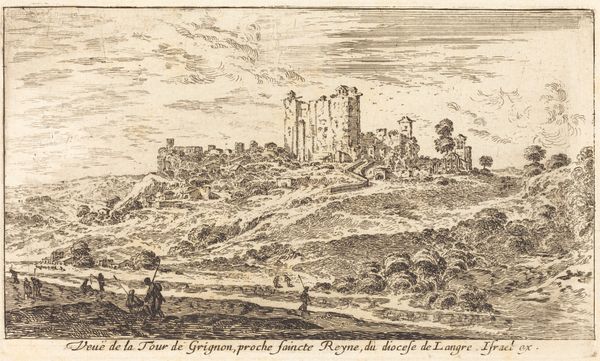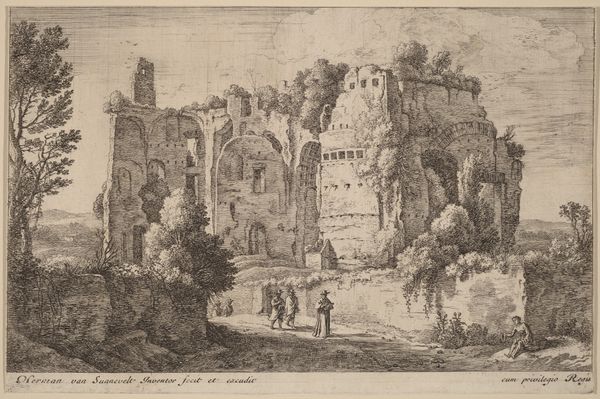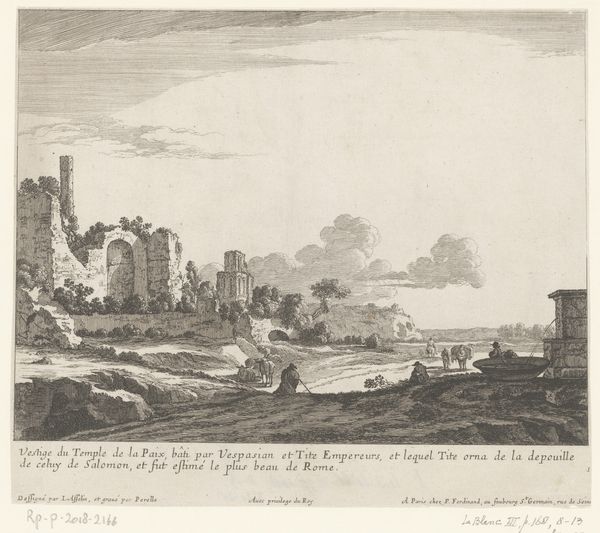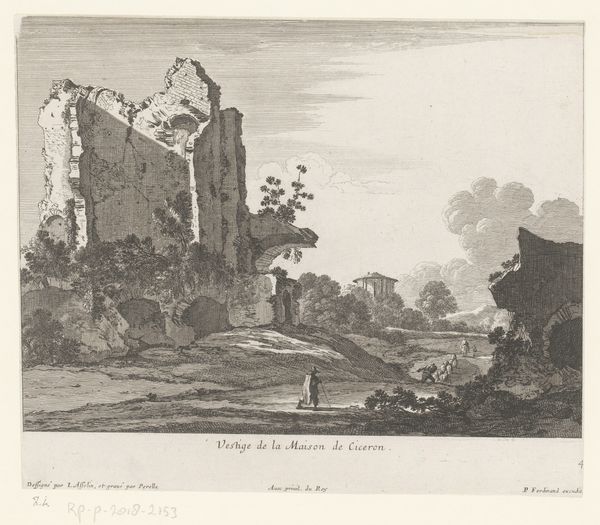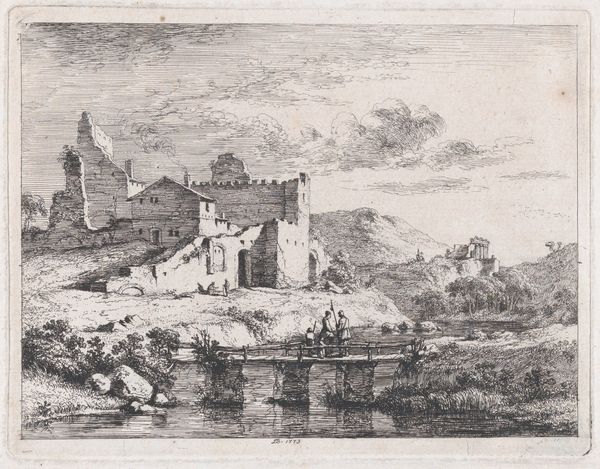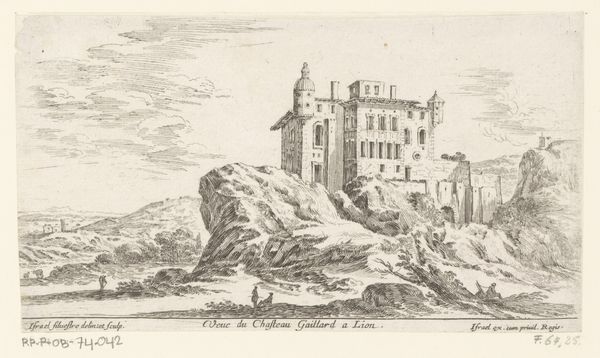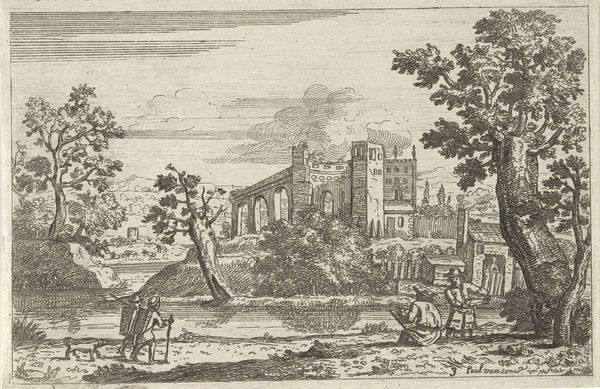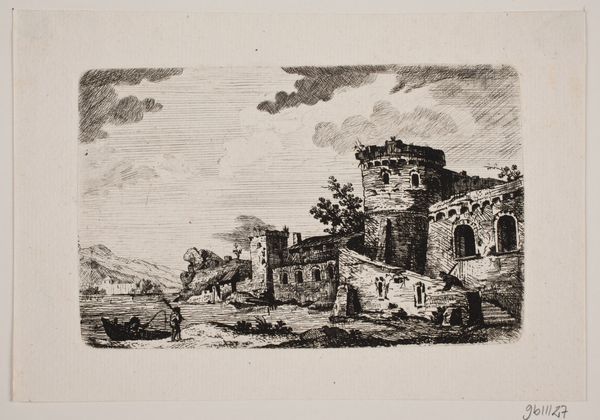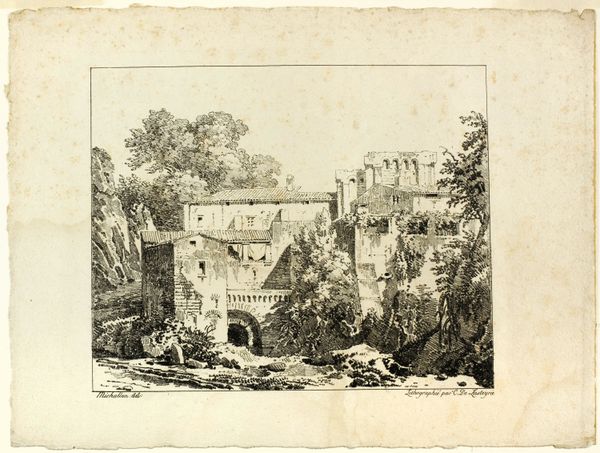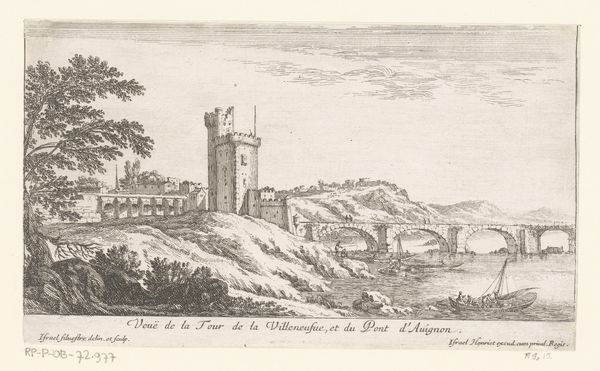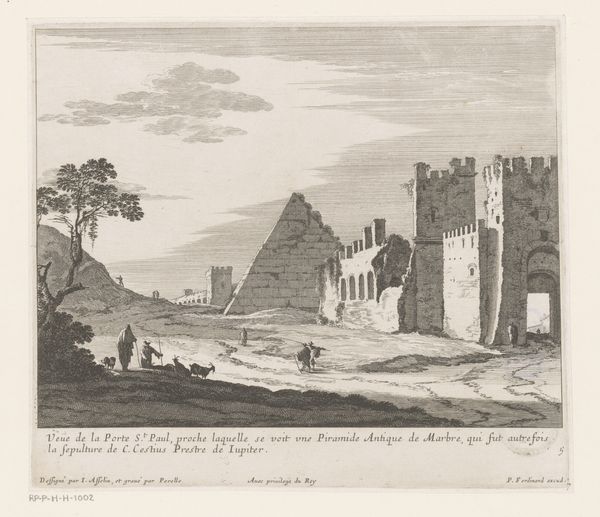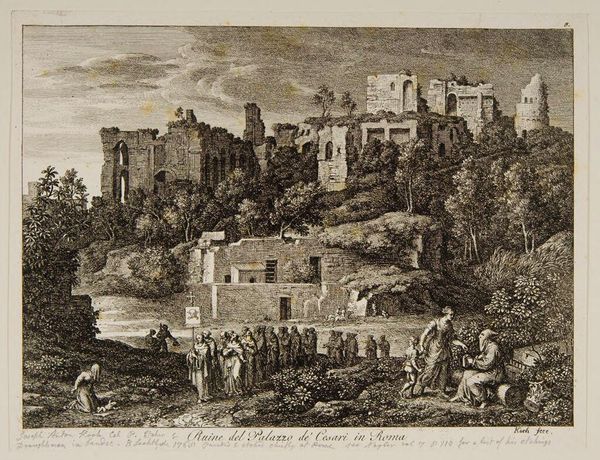
Ruins of the Palace of the Caesars in Rome, plate eight from Die Römische Ansichten 1810
0:00
0:00
drawing, print, etching, paper
#
drawing
#
neoclassicism
# print
#
etching
#
landscape
#
paper
#
romanesque
#
cityscape
#
history-painting
Dimensions: 193 × 269 mm (image); 212 × 283 mm (plate); 248 × 313 mm (sheet)
Copyright: Public Domain
Curator: Before us is Joseph Anton Koch’s "Ruins of the Palace of the Caesars in Rome," an etching dating back to 1810, now held in the collection of the Art Institute of Chicago. Editor: Immediately, I'm struck by the contrasting darkness and light. The etched lines feel almost brittle, creating a powerful sense of decay, despite the organized architectural forms still apparent. Curator: Koch masterfully balances the graphic weight, doesn't he? Notice how he employs hatching and cross-hatching to define volume and recession, directing our gaze upwards to the fragmented architecture atop the hill. It's not merely topographical; the line work suggests an emotional weight, perhaps even the burden of history. Editor: Indeed. The ruins become symbols of a lost grandeur, a reminder of the cyclical nature of empires. The figures in the foreground, seemingly oblivious to the looming remnants, almost feel like a warning, caught up in their daily lives while surrounded by the vestiges of what was. What narratives might those figures suggest, do you suppose? Curator: Perhaps Koch intended them to serve as a compositional device, anchoring the monumental ruin to a comprehensible scale. Still, in viewing this through a Formalist lens, note how the human presence functions more as staffage to emphasize the immensity and inherent design within the ruins. The interplay between precise geometry and the natural forms creates a productive visual tension. Editor: Possibly, but I'm drawn to the smaller elements; those figures on the hill, arranged in what seems like a formal procession. The banner they carry has an emblem which to me hints to civic memory; I see this print speaking directly to ideals of civic identity, or perhaps critiquing such notions of an ideal Roman past, set in contrast to Koch's present. Curator: I appreciate how your Iconographic analysis considers the socio-political resonances. Personally, my attention always gravitates to the deliberate distribution of the dark and light which, considered independently, reveal the artist’s hand through formal arrangement alone. Editor: And to consider its graphic strength helps, no doubt, when facing an intimidating, layered artwork of this kind. Thanks for walking me through that! Curator: My pleasure. This artwork provides fertile ground for analysis and observation, a journey well-taken!
Comments
No comments
Be the first to comment and join the conversation on the ultimate creative platform.
